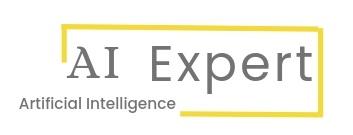What's new with Google Bard?
Google Bard has just updated. To know more about latest Bard updates of September 2023: Visit Here
The ability to upload images: You can now upload images alongside text in your conversations with Bard. This allows you to boost your imagination and creativity in completely new ways. For example, you could upload a picture of a cat and ask Bard to write a poem about it, or you could upload a picture of a city and ask Bard to give you directions.
Text-to-Speech: Bard can now read responses out loud in over 40 languages. This is great for people who prefer to listen to text rather than read it, or for people who are visually impaired.
Pinned and recent threads: You can now pin your most important conversations with Bard so that you can easily find them later. You can also rename conversations and have multiple conversations going at once.
Share your conversations: You can now share part or all of your conversations with Bard with others. This is a great way to collaborate with others on creative projects, or to share your ideas with the world.
Modify Bard’s responses: You can now modify Bard’s responses by making them simpler, longer, shorter, more professional, or more casual. This gives you more control over the output of Bard and allows you to get the exact response you want.
Python code to Replit: Now one can export Python code generated by Bard to Replit. This allows you to continue working on your code in Replit, or to share it with others.
To know more visit: Google Bard Latest News
What is Google Bard?
A large language model (LLM) chatbot named Google Bard a Google AI product. It can generate text, translate languages, write many types of creative content, and provide you with helpful answers because it was trained on a sizable dataset of text and code.
Bard is still under development, but it has already learned to do many things that were once thought to be impossible for computers. For example, Bard can write poems, stories, and scripts that are indistinguishable from human-written work.
It can also translate languages with near-perfect accuracy. And it can answer your questions about the world in a comprehensive and informative way.
Bard is not just a powerful language model. It is also a creative tool that can help you to express yourself in new and innovative ways.
If you are a writer, Bard can help you to brainstorm ideas, develop characters, and write dialogue.
If you are a translator, Bard can help you to translate documents with speed and accuracy. And if you are a student, Bard can help you to learn new things and understand complex concepts.
Bard is still under development, but it is clear that it has the potential to change the way we create. If you are interested in exploring the possibilities of AI, then I encourage you to try Bard. You may be surprised at what it can do.
- Try Bard today and see for yourself how it can help you to be more creative and productive.
- Share your experiences with Bard with others and help to spread the word about this powerful AI language model.
- Stay up-to-date on the latest developments in AI by following Google Bard on social media.
How to use Google Bard?
To use Google Bard, simply visit the Google Bard and start a conversation. You can ask Bard anything you want, and it will try its best to answer your question or generate text that is relevant to your input.
Tips for using Google Bard
Use AI Prompts: Are a powerful way to communicate with AI. By providing a clear and concise prompt, you can tell the AI what you want it to do and how you want it to do it. This can help you get the most out of your interactions with AI chatbots.
Be specific in your requests. The more specific you are, the better Bard will be able to understand what you are asking and generate the best possible response.
Use natural language. You don’t need to use formal language or jargon when you are talking to Bard. Just use the same language that you would use when you are talking to a friend or colleague.
Be patient. It is under development, so it may not always be able to understand your prompts, instructions and questions perfectly. If you are not satisfied with Bard’s response, try rephrasing your question or providing more context.
Here are some examples of how you can use Google Bard:
- Ask Bard to write a poem, story, or script.
- Answer your questions about the world.
- Generate code.
- Collaborate with others on creative projects.
- Share your ideas with the world.
Conclusion
Bard is a powerful and versatile AI language model that is getting even better with new features. If you are looking for a creative and informative chatbot, then Bard is a great option.










